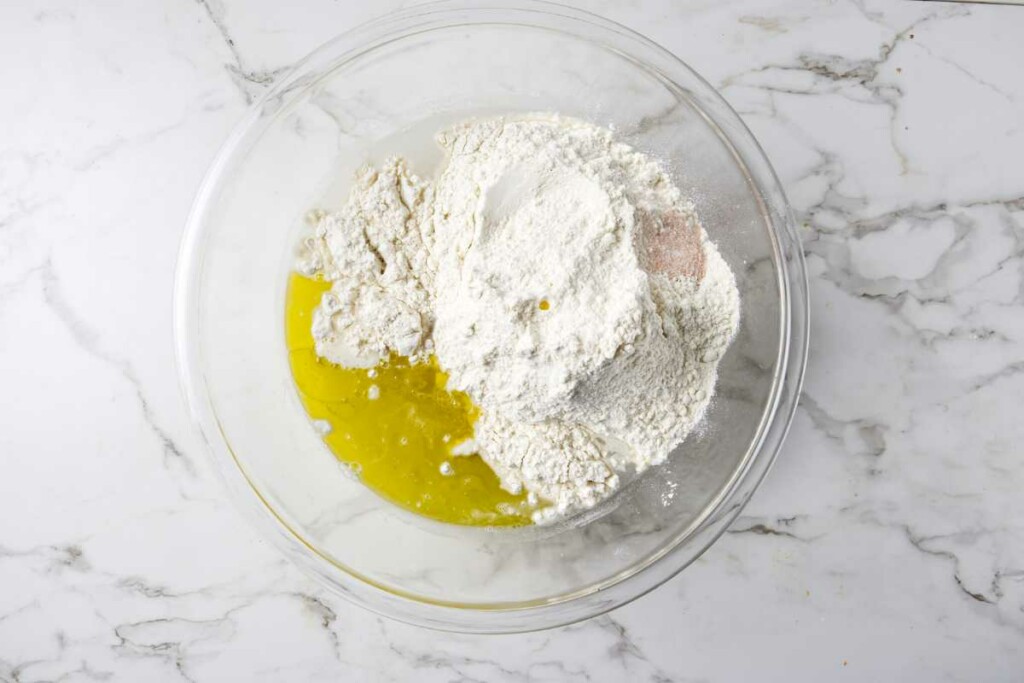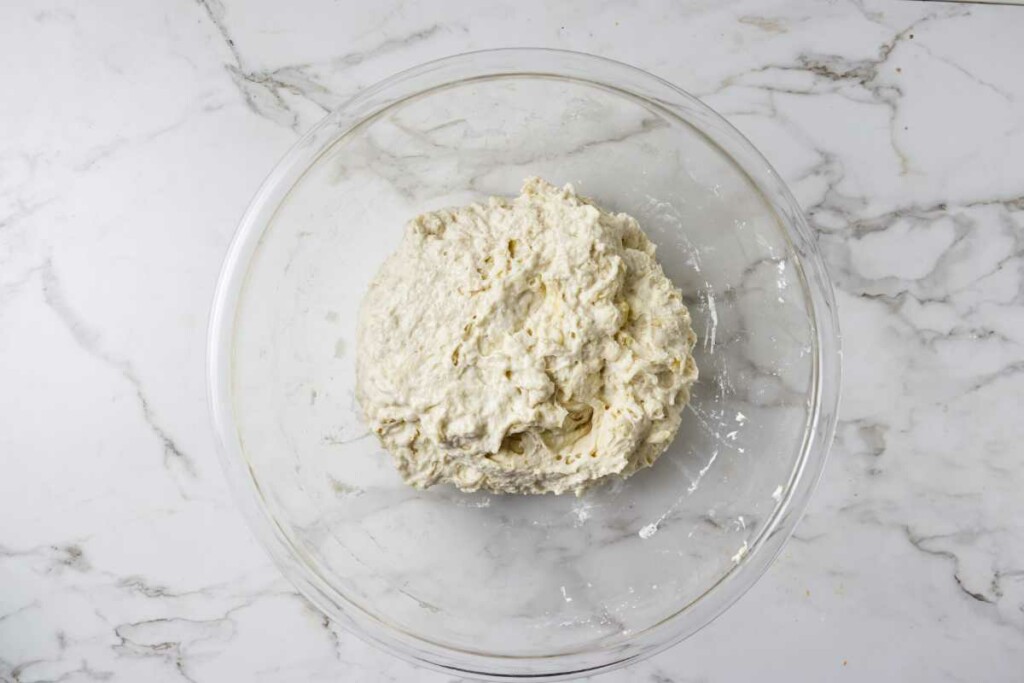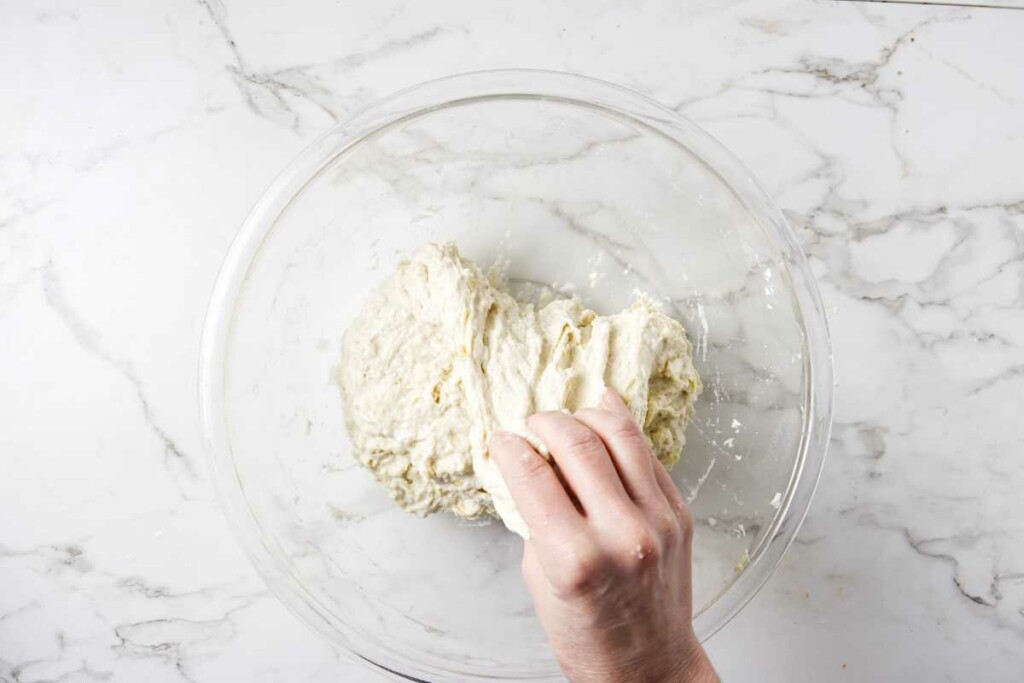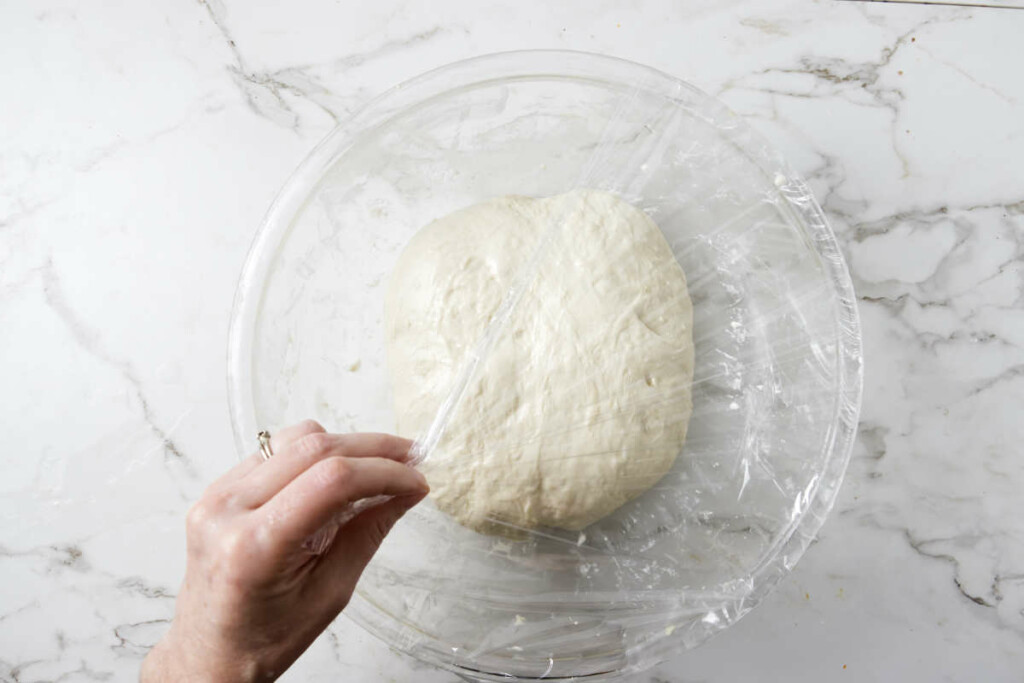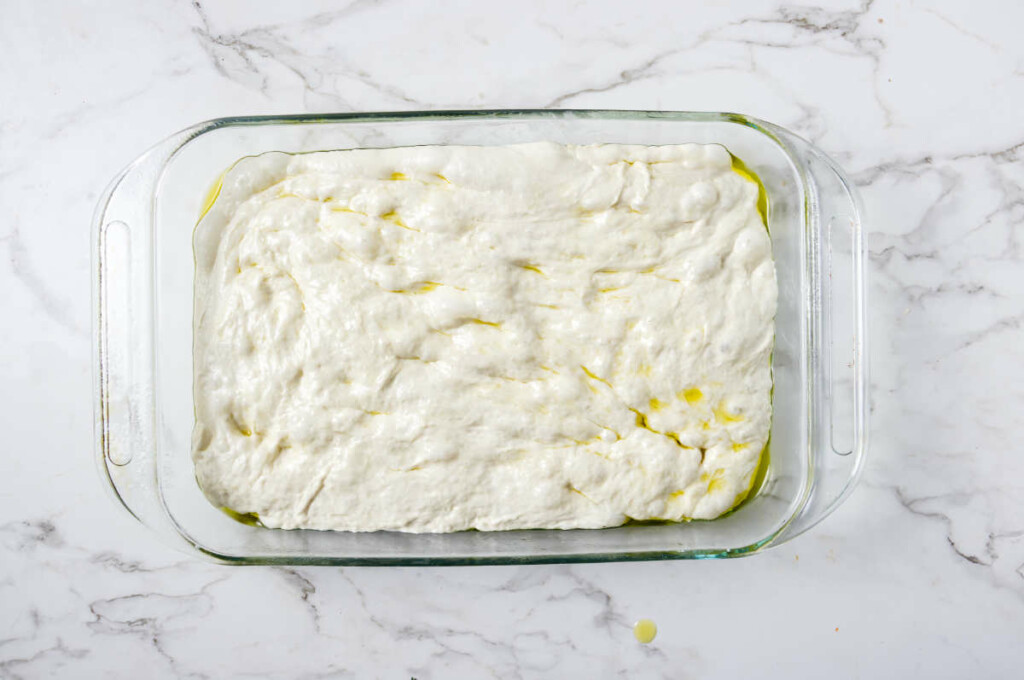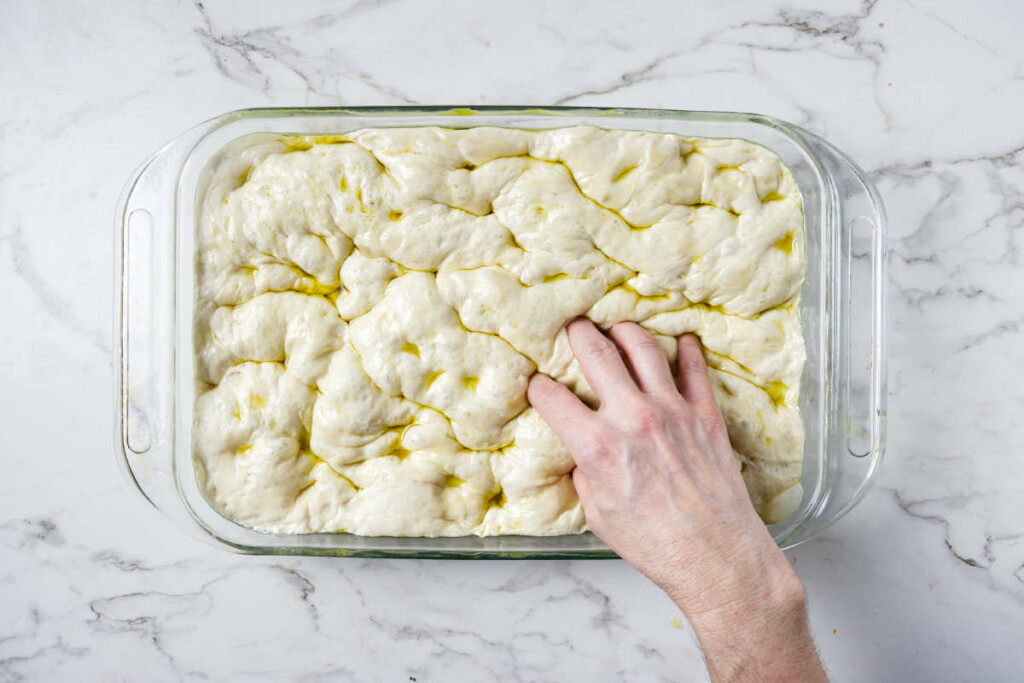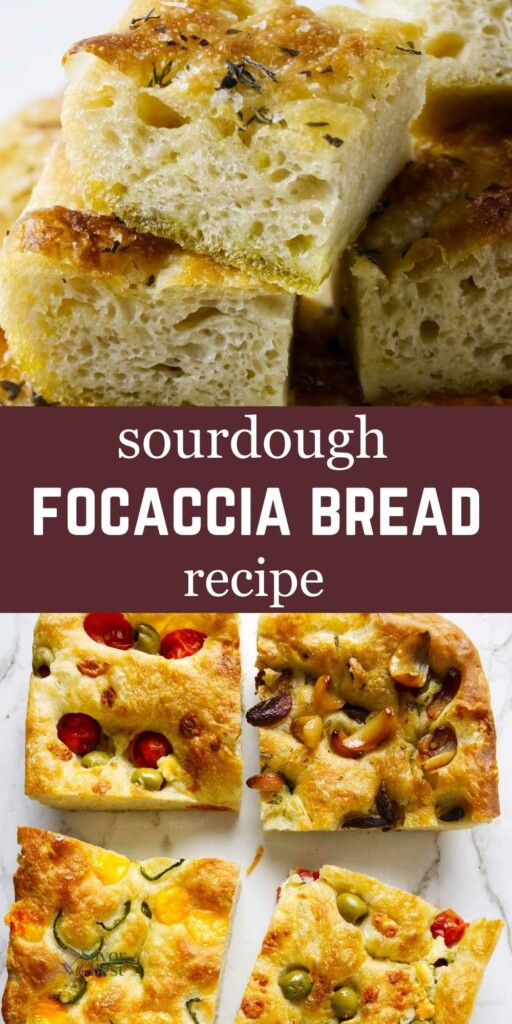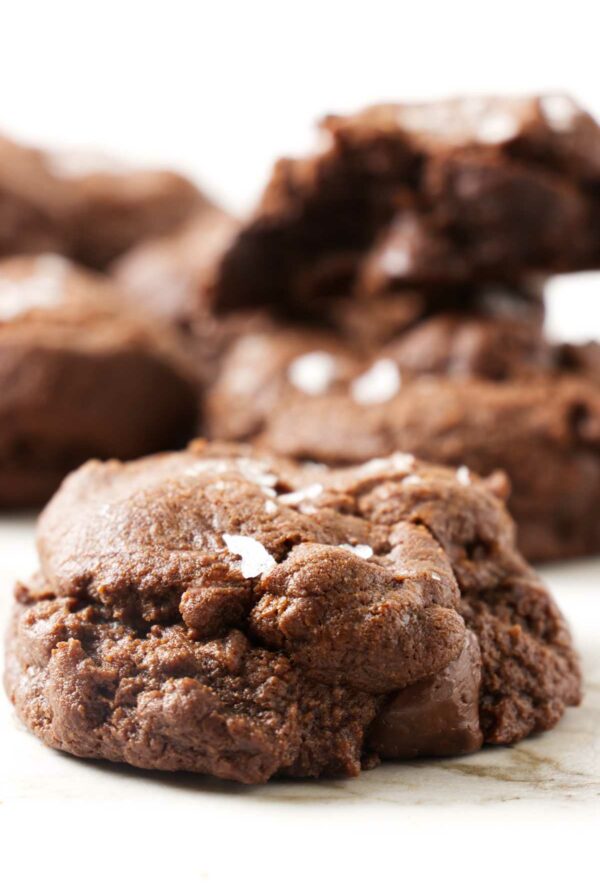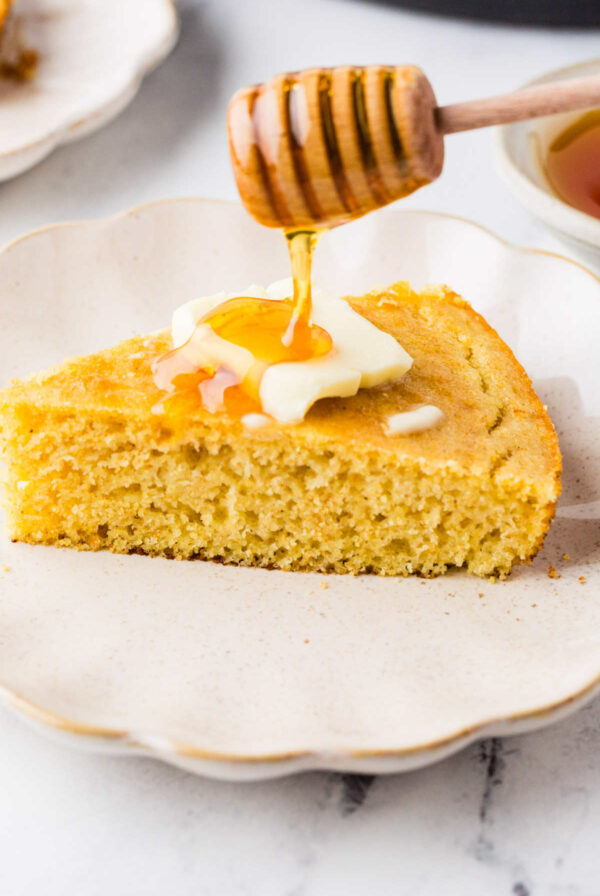This post may contain affiliate links. Please read our disclosure policy. As an Amazon Associate, I earn from qualifying purchases.
This sourdough focaccia bread is everything a good focaccia should be: crisp edges, a chewy, airy center, and enough olive oil to make your fingers shiny. The high-hydration dough creates that soft, open crumb we all love, and it’s surprisingly low-effort.
Let it rise on your schedule, load it up with toppings (or not), and you’ve got a seriously good bread that holds its own alongside soups, salads, or just your favorite dipping oil.
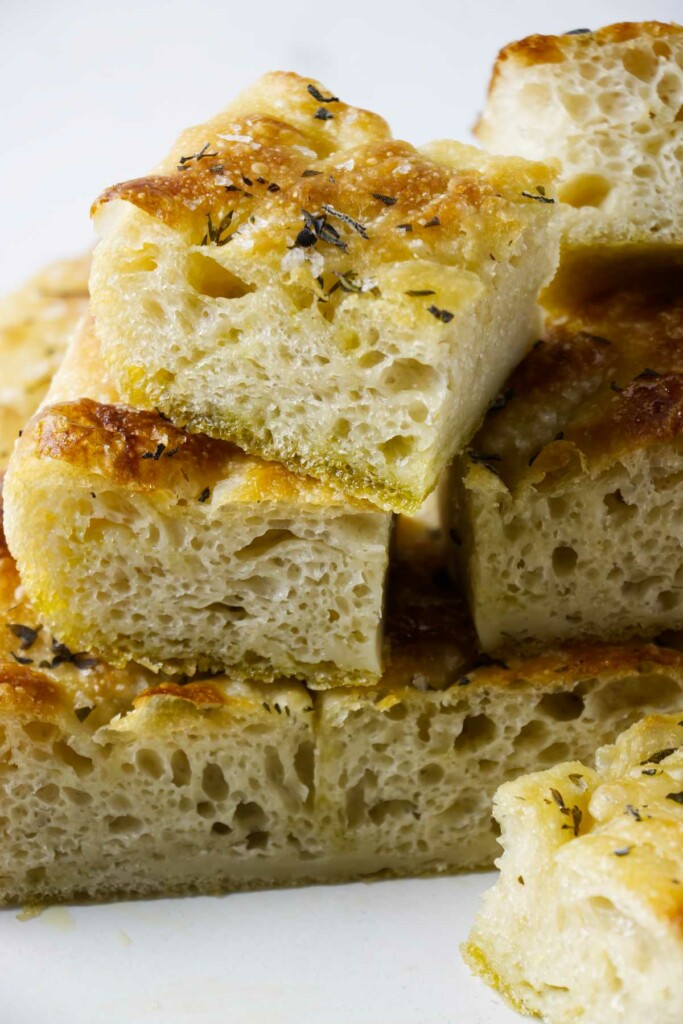
I used this bread to make a focaccia sandwich, and let’s just say, it did not disappoint. If you’re into baking with ancient grains, we also have an einkorn focaccia recipe that’s just as simple and perfect for topping
Here is Why This Sourdough Focaccia Recipe Works
High hydration = big flavor + fluffy texture: With a higher hydration than most traditional focaccia recipes, this dough bakes up extra light and airy. Worth the sticky hands.
No kneading required: Stretch and folds do the work for you….. or let the mixer take the wheel if you’re not feeling hands-on.
Flexible timing: Let it rise at room temp or stash it in the fridge overnight. Your schedule, your rules.
Topping-friendly: Load it up with roasted garlic, olives, cheese—or whatever needs using up in your fridge. Focaccia doesn’t judge.
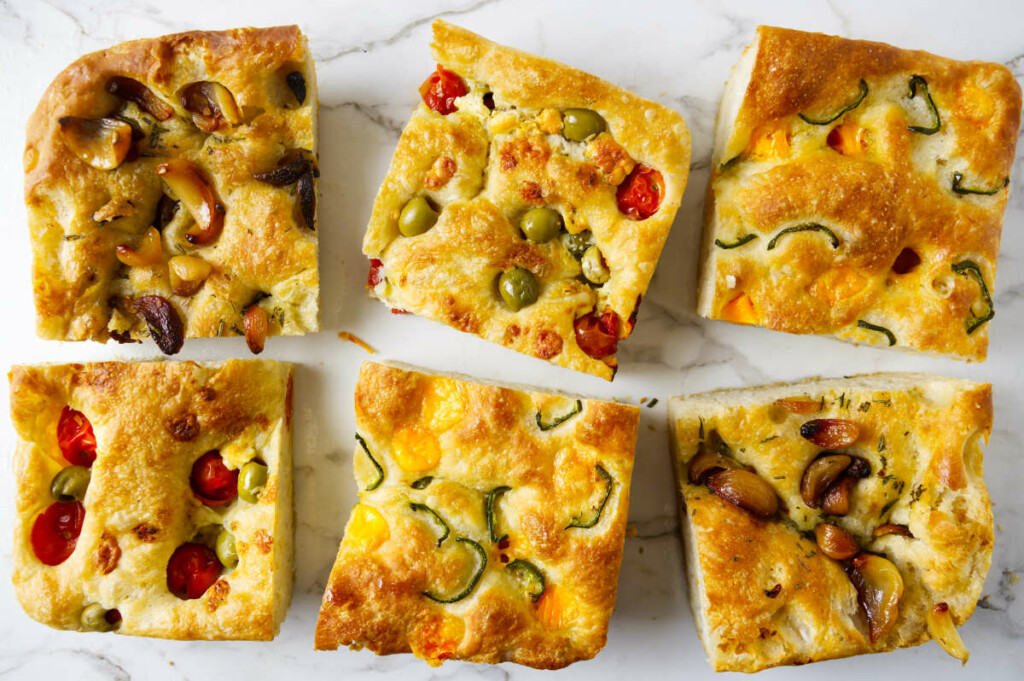
Recipe Tips
Wet your hands for stretch and folds: Sticky dough is easier to handle with damp hands.
Olive oil is your best friend: Don’t skimp when coating the pan or the top. It helps create that crisp, golden crust. The 3 tablespoons is just a suggestion. Honestly, I don’t really measure.
Cold fermentation = better flavor: If you have the time, let the dough rest in the fridge overnight. The longer rise gives the bread a deeper sourdough flavor.
Give it time after the fridge: Cold dough needs extra time to warm up and puff before baking.
Use toppings with care: Avoid piling on watery ingredients unless you want a soggy top. Press toppings in gently after dimpling.
Let the dough rest if it resists stretching: If it springs back when you’re trying to spread it in the pan, walk away for 15–20 minutes. The gluten just needs to relax.
Don’t rush the rise: Watch the dough, not the clock. It should look puffy and jiggly before baking, like it’s just about to burst.
Avoid over-dimpling: Press straight down with oiled fingertips, but don’t deflate the dough completely. You want to keep those airy bubbles.
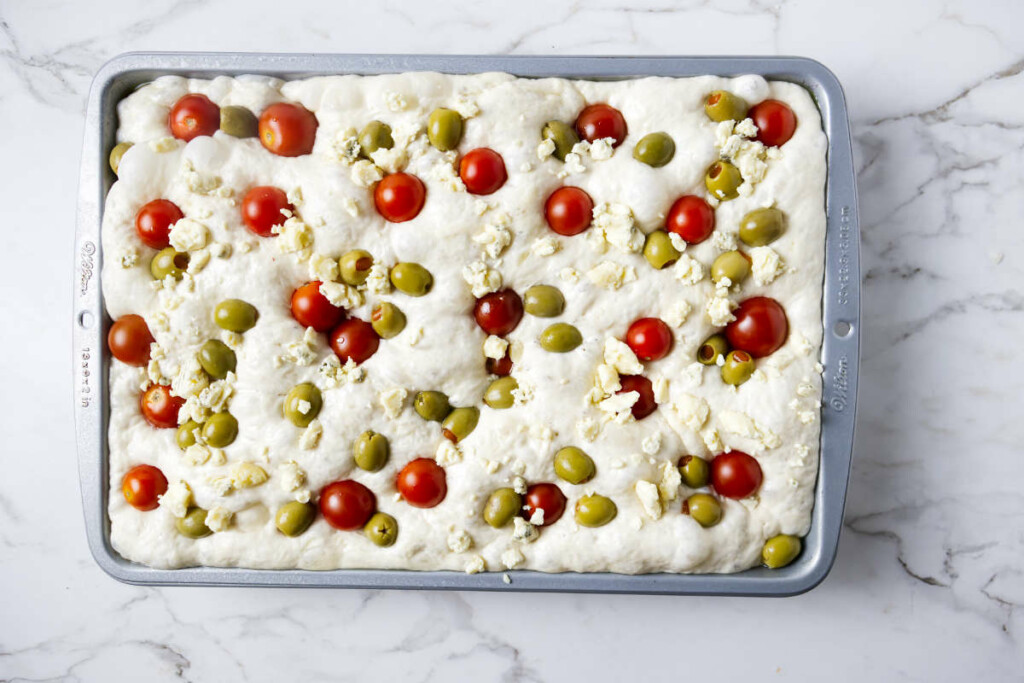
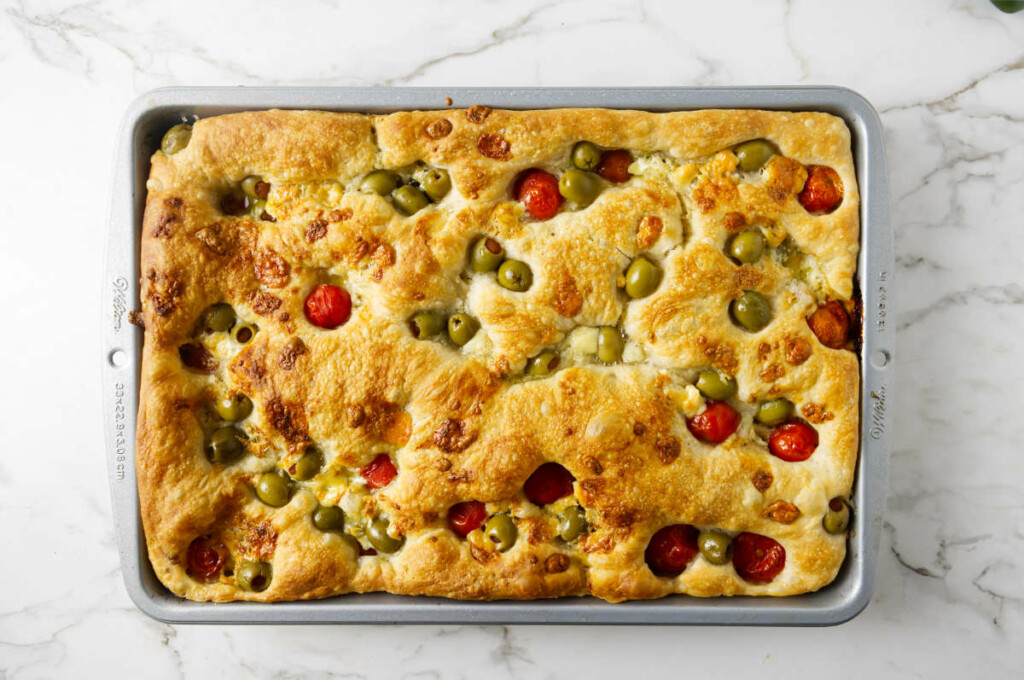
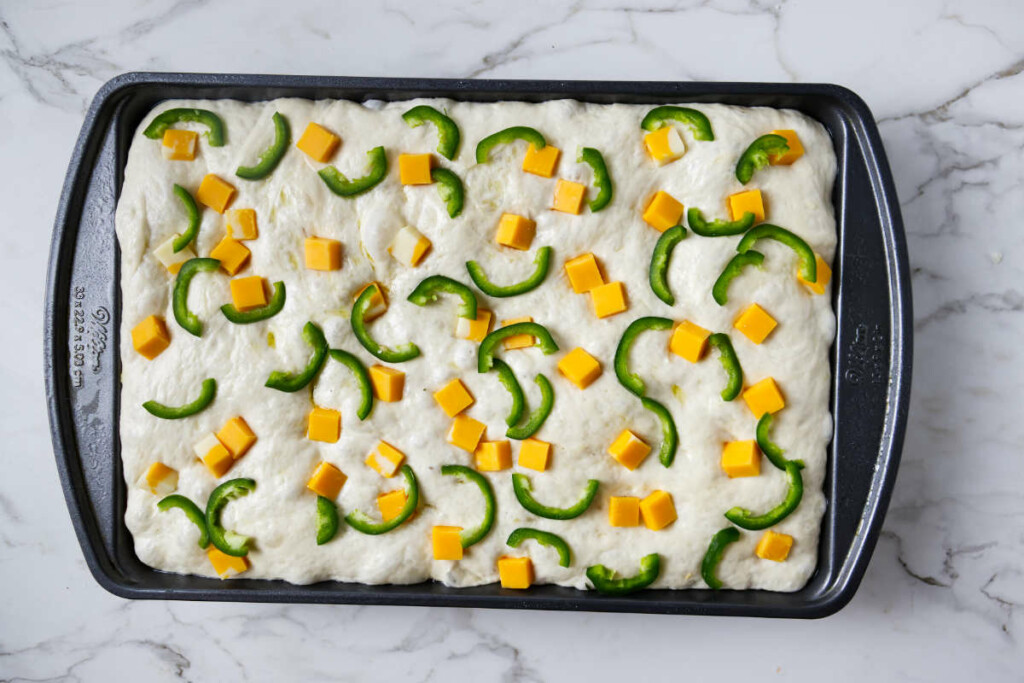
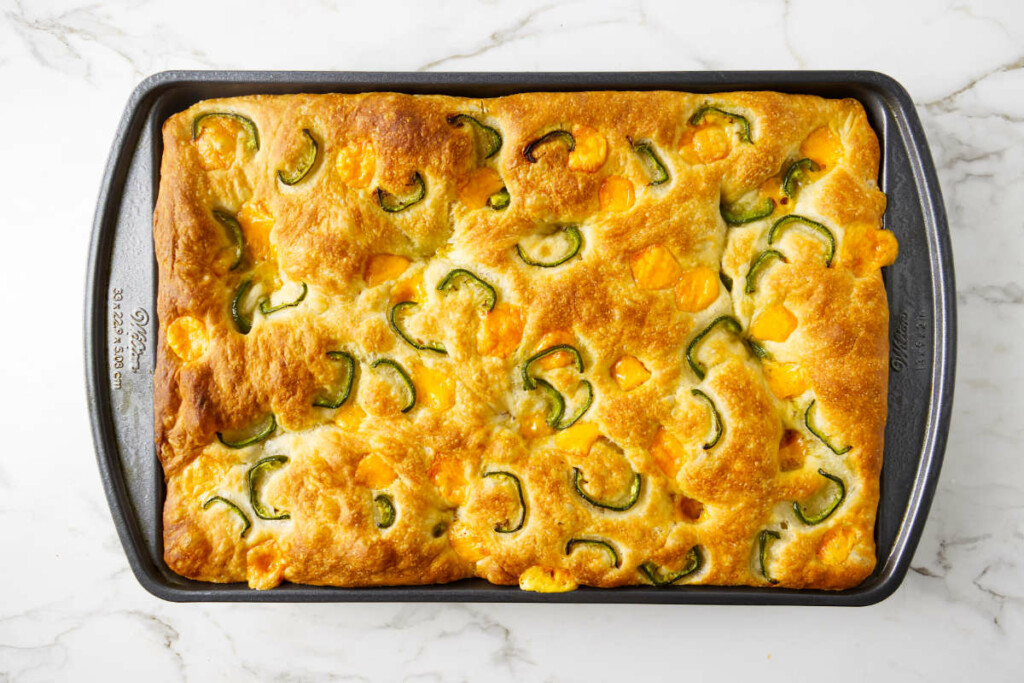
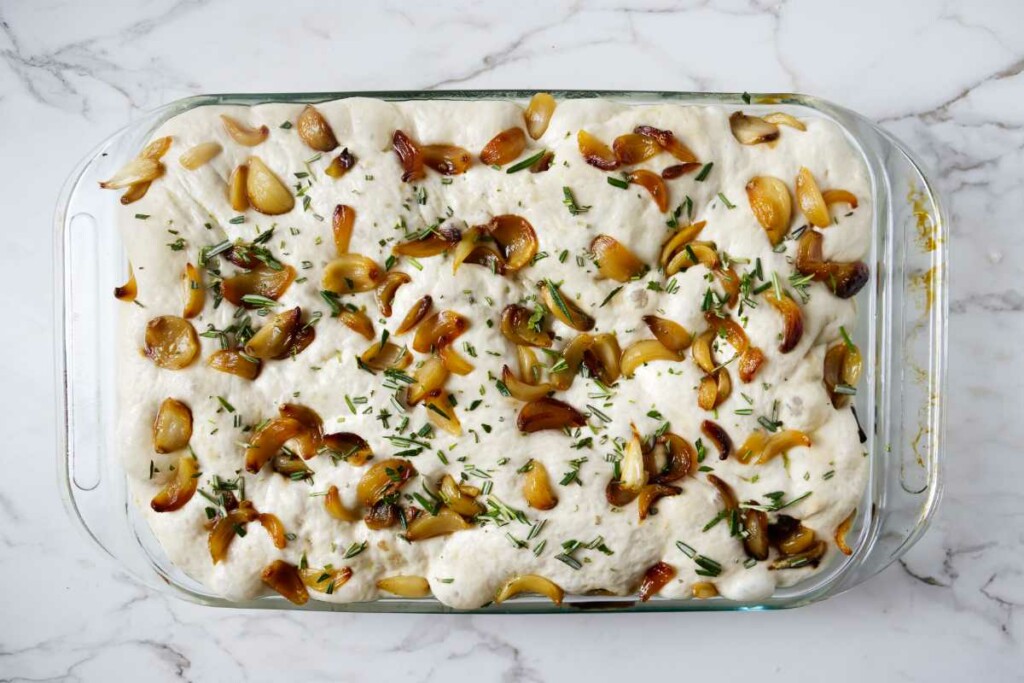
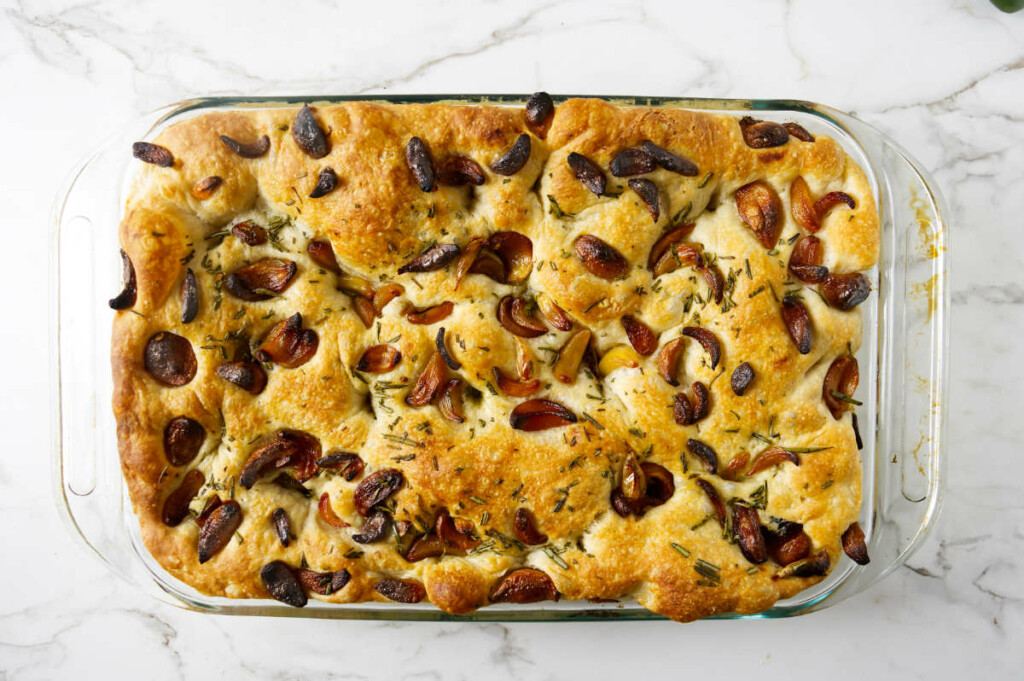
Storing Leftovers
Room Temperature: Store leftover focaccia in an airtight container at room temperature for up to 2 days. If your kitchen runs warm or humid, you can refrigerate it.
Freezing: Sourdough focaccia bread freezes well. Wrap individual pieces in plastic wrap, then place them in a freezer-safe bag. Freeze for up to 2 months. Thaw at room temperature before reheating.
Reheating: To bring back the crisp edges and soft interior, reheat in a 350°F oven for 5–10 minutes. Skip the microwave, it tends to make the bread chewy (in a not-great way).
Pin this now to find it later!
Pin It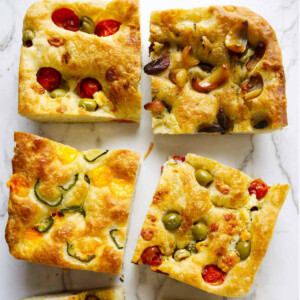
Sourdough Focaccia Bread Recipe
If you make this recipe, please leave a star rating and comment.
Ingredients
- 6 tablespoons olive oil, divided 72 grams (plus more for the top)
- ⅔ cup active sourdough starter, 100% hydration, 150 grams
- 1¾ cups water, warmed to about 100°F, 414 grams
- 2 teaspoons salt, or bread flour 12 grams
- 4 cups all-purpose flour, 480 grams
- 2 teaspoons large-flake sea salt (such as Maldon), such as Maldon salt
Instructions
- Spray a 13 x 9 inch pan with non-stick spray then drizzle at least 3 tablespoons olive oil into the bottom. The spray keeps the dough from sticking and the oil makes the bottom and edges crunchy.
- In a large mixing bowl, combine the sourdough starter, warm water, 3 tablespoons of olive oil, flour, and salt.
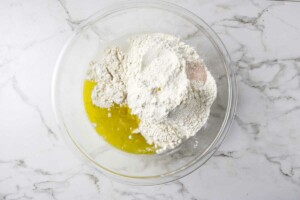
- Mix until a shaggy, sticky dough forms. It will feel quite wet at this stage, but that’s exactly what gives focaccia its soft, pillowy texture.
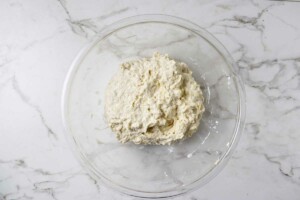
- Rest (autolyse-style) – optional but helpful: Let the dough rest for 30 to 40 minutes to help the flour hydrate. This makes the dough easier to work with.
Build the Dough Structure
- Over the next hour, perform 3 to 4 sets of stretch and folds, spacing them about 15–20 minutes apart. To do this, grab one edge of the dough, stretch it up, and fold it over toward the center. Turn the bowl and repeat on all sides. This helps build strength and elasticity without kneading.
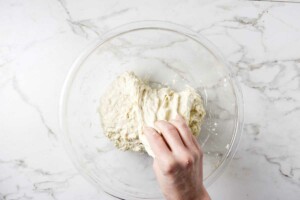
- Optional shortcut method: If you prefer not to do stretch and folds, you can beat the dough with an electric mixer on medium speed for about 2 minutes, until it’s smooth and slightly elastic. The dough won’t be quite as fluffy with this method but it will still taste amazing.
Bulk fermentation
- Cover the bowl and let the dough rise at room temperature (ideally around 72–75°F) for 4 to 6 hours, until it's noticeably puffy and expanded. It may not double completely but should be airy and jiggly. Alternatively, refrigerate the dough overnight for 8–16 hours for more flavor development.
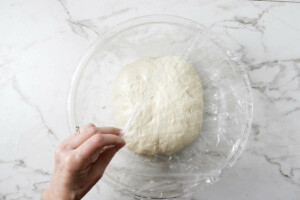
Second Rise (Pan Proof)
- For the Second Rise Transfer the dough into the prepared pan. Gently stretch it toward the edges. If it resists, let it rest 15–20 minutes and try again. Cover and let it rise until puffy and bubbly, about 2 to 3 hours at room temperature. (If cold from the fridge, allow more time.)
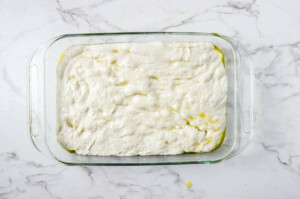
- Near the end of the rise, preheat your oven to 425°F. Drizzle a generous amount of olive oil over the surface (I don’t measure this, I just use a few glugs). Use your fingertips to gently dimple the dough all over. Press straight down without deflating too much.
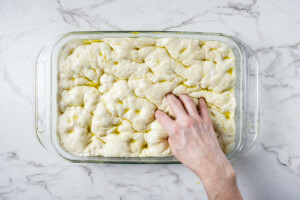
- If you’re using toppings, scatter them over the dough (see notes for savory topping ideas). Sprinkle the top with flaky Maldon salt or another type of finishing salt.

Bake:
- Bake for 30–35 minutes (did 25 min cause it isn’t very thick), until deeply golden on top and edges are crisp. Check earlier if your oven runs hot. Let it rest in the pan for about 5 minutes, then transfer to a wire rack. Serve warm or at room temperature.
Notes
Ideas for Savory Toppings:
- Sliced jalapeños and cubes of sharp cheddar
- Cherry tomatoes, sliced green olives, and crumbled blue cheese
- Roasted garlic cloves and fresh rosemary leaves
- Artichokes, sun-dried tomatoes, and Parmesan
- Feta, kalamata olives, and oregano
- Asparagus, lemon zest, and ricotta (add ricotta post-bake)
- Pickled jalapeños and smoked provolone
- Sautéed wild mushrooms, caramelized onions, and thyme
- Fig jam, blue cheese, and prosciutto (add jam + prosciutto post-bake)
Nutrition
Nutrition information is automatically calculated, so should only be used as an approximation.
 Like this recipe? Rate & comment below!
Like this recipe? Rate & comment below!Focaccia with Sourdough Starter
This high hydration dough might be a little sticky to work with, but it rewards you with a soft, airy crumb. And since it’s a no knead focaccia, you don’t need to break a sweat to get bakery level results. It is a perfect bread for dipping in herbed olive oil dip.
It’s flexible, fuss-free, and endlessly customizable, just the kind of recipe that earns a regular spot in your rotation. Crispy edges, airy crumb, and enough olive oil to make it feel just a little luxurious.
The Ingredient Shot
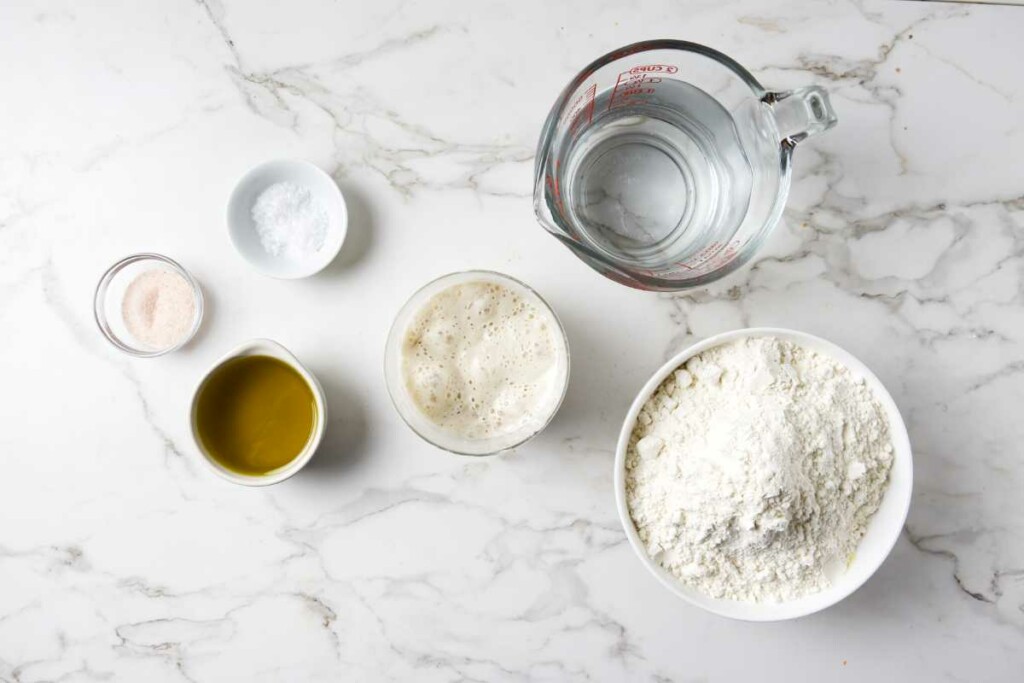
The Process Shots
